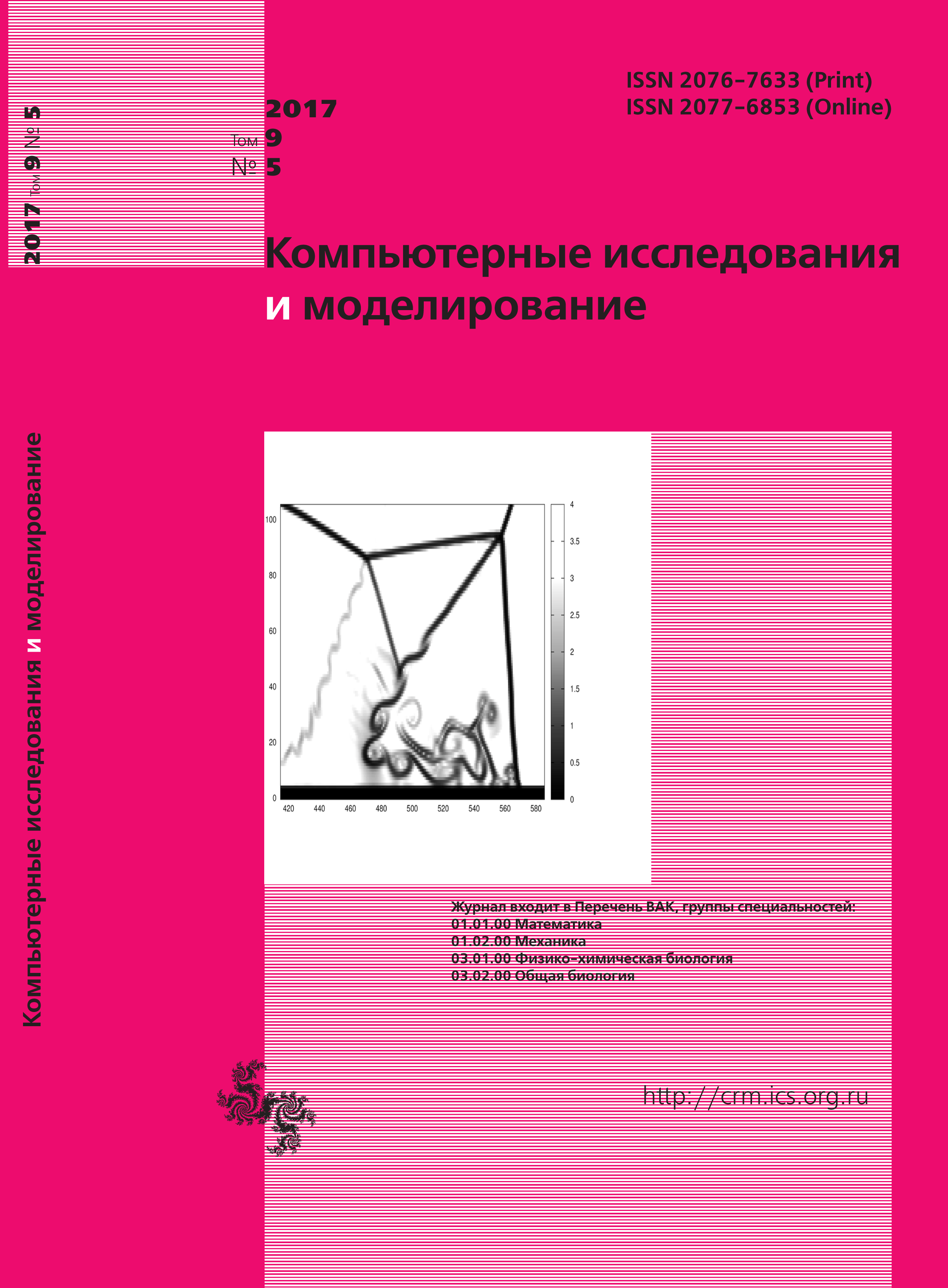All issues
- 2025 Vol. 17
- 2024 Vol. 16
- 2023 Vol. 15
- 2022 Vol. 14
- 2021 Vol. 13
- 2020 Vol. 12
- 2019 Vol. 11
- 2018 Vol. 10
- 2017 Vol. 9
- 2016 Vol. 8
- 2015 Vol. 7
- 2014 Vol. 6
- 2013 Vol. 5
- 2012 Vol. 4
- 2011 Vol. 3
- 2010 Vol. 2
- 2009 Vol. 1
Regarding the dynamics of cosymmetric predator – prey systems
To study nonlinear effects of biological species interactions numerical-analytical approach is being developed. The approach is based on the cosymmetry theory accounting for the phenomenon of the emergence of a continuous family of solutions to differential equations where each solution can be obtained from the appropriate initial state. In problems of mathematical ecology the onset of cosymmetry is usually connected with a number of relationships between the parameters of the system. When the relationships collapse families vanish, we get a finite number of isolated solutions instead of a continuum of solutions and transient process can be long-term, dynamics taking place in a neighborhood of a family that has vanished due to cosymmetry collapse.
We consider a model for spatiotemporal competition of predators or prey with an account for directed migration, Holling type II functional response and nonlinear prey growth function permitting Alley effect. We found out the conditions on system parameters under which there is linear with respect to population densities cosymmetry. It is demonstated that cosymmetry exists for any resource function in case of heterogeneous habitat. Numerical experiment in MATLAB is applied to compute steady states and oscillatory regimes in case of spatial heterogeneity.
The dynamics of three population interactions (two predators and a prey, two prey and a predator) are considered. The onset of families of stationary distributions and limit cycle branching out of equlibria of a family that lose stability are investigated in case of homogeneous habitat. The study of the system for two prey and a predator gave a wonderful result of species coexistence. We have found out parameter regions where three families of stable solutions can be realized: coexistence of two prey in absence of a predator, stationary and oscillatory distributions of three coexisting species. Cosymmetry collapse is analyzed and long-term transient dynamics leading to solutions with the exclusion of one of prey or extinction of a predator is established in the numerical experiment.
Copyright © 2017 Epifanov A.V., Tsybulin V.G.
- , . Dynamic regimes of the stochastic "prey - predatory" model with competition and saturation. // Computer Research and Modeling. — 2019. — V. 11, no. 3. — P. 515. DOI: 10.20537/2076-7633-2019-11-3-515-531
- , . Modeling of anisotropic convection for the binary fluid in porous medium. // Computer Research and Modeling. — 2018. — V. 10, no. 6. — P. 801. DOI: 10.20537/2076-7633-2018-10-6-801-816
Indexed in Scopus
Full-text version of the journal is also available on the web site of the scientific electronic library eLIBRARY.RU
The journal is included in the Russian Science Citation Index
The journal is included in the RSCI
International Interdisciplinary Conference "Mathematics. Computing. Education"







